Find the perfect “not-beginner-but-almost-intermediate” surfboard
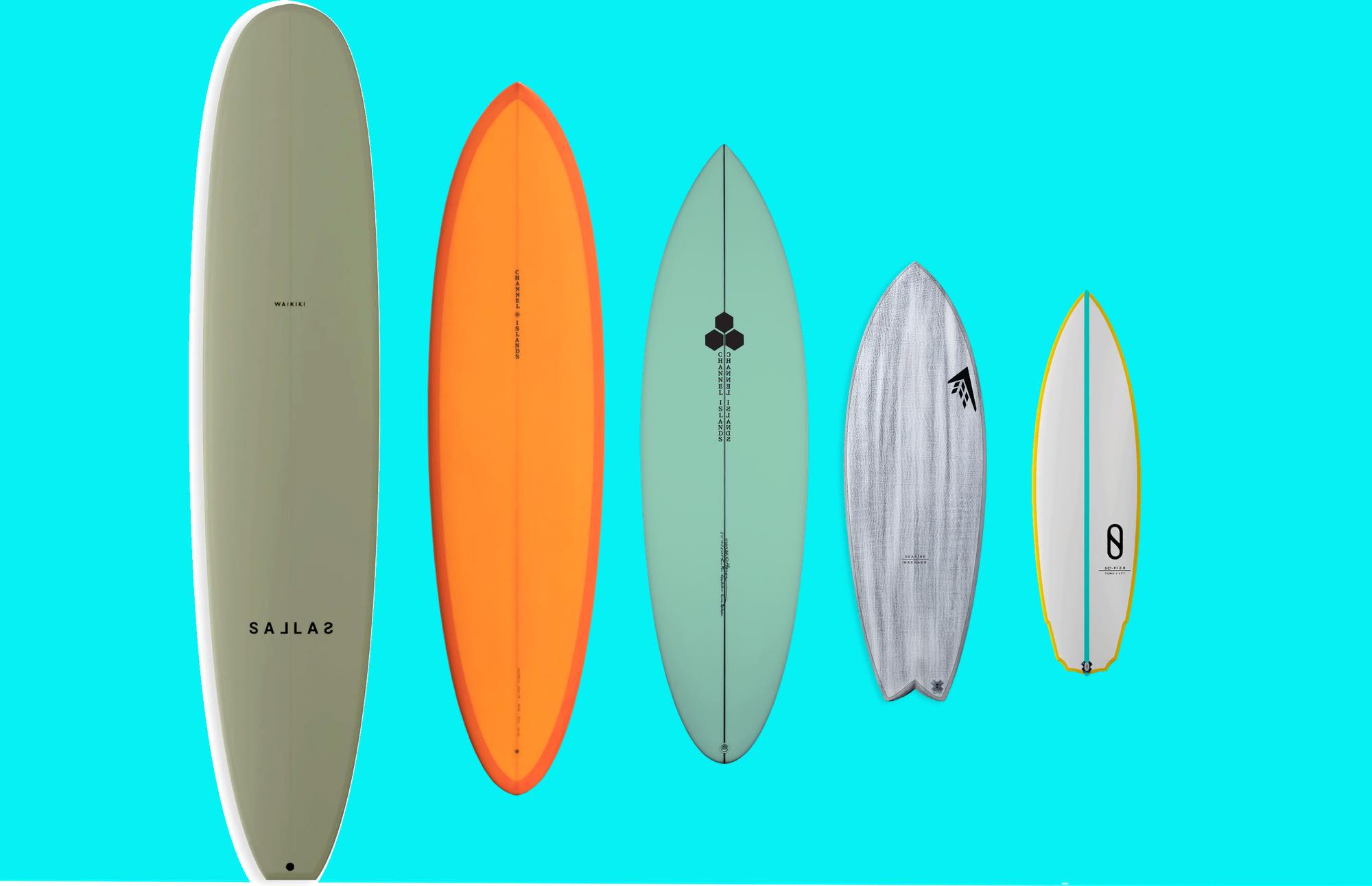
No longer a beginner? A mini-mal is a great intermediate surfboard, but an oversized shortboard will be more useful to you in the long run. Here’s why…
The beauty of learning to surf in a wave pool is that you will progress at a steady pace. Hit it like you’d hit the gym and you’ll progress rapidly. For the ocean-dependent beginning surfer things like flat spells, hurricanes, shark scares or any of several other factors can interrupt your frequency of sessions.
Graduating from the bay section of a Wavegarden Lagoon facility like Surf Snowdonia or NLand, is a huge accomplishment. You’ve learned the basics: paddling, jumping to your feet, and remaining stable on that big foamy. Take a moment and pat yourself on the back.
Now that the whitewater is a bit boring and you want more of a thrill you’ll need the right board to take you to the next level.
So what board is best in this awkward phase between beginner and intermediate? Any board that doesn’t resemble a giant tongue depressor will help you advance your skills.
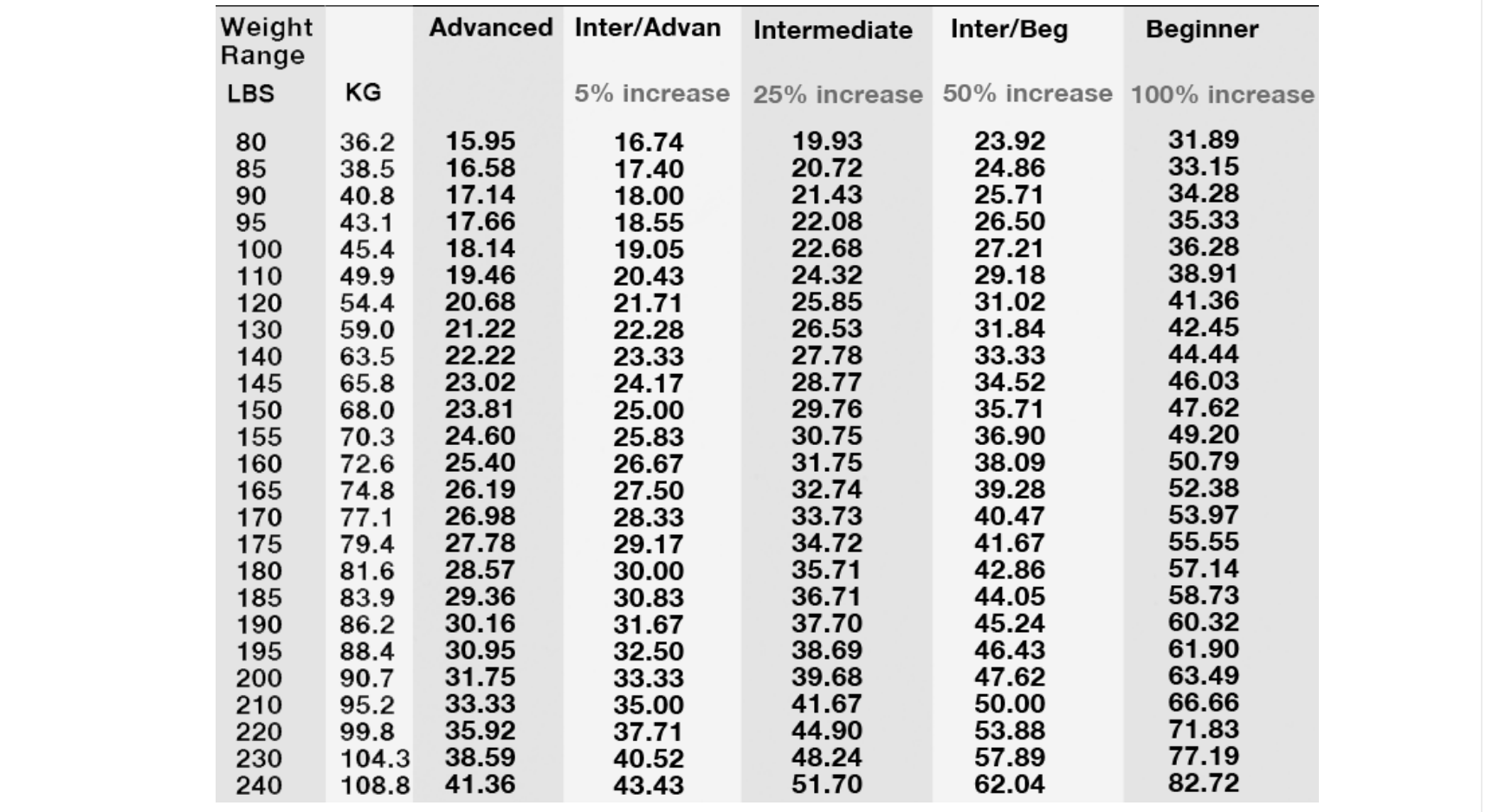
The numbers above represent surfboard volume as measured in cubic liters. The more cubic liters (CL) and volume, the more water a surfboard will displace. The more CL and volume a board has, the more stable it is and the easier it is to paddle. The less CL and volume a board has, the easier it is to maneuver.
1. Surfboard Dimensions and Volume: Size up, unless you are a pro skater
The biggest rule in picking the right size board is don’t go too small. Yes, that Haydenshapes Love Buzz looks awesome and even has extra foam under your chest for paddling, but will be too small for you. (Unless you order it a foot longer than you are tall, but more on that later).
We were fortunate enough one time to take pro skateboarder Cairo Foster surfing. Pushing him into a wave on a severely under-volumed 6’0” Lost Subdriver he jumped to his feet and started turning immediately. You dear reader are wonderful. But you are not Cairo Foster, a man who jumps down stairs on a tiny plank of wood for a living. Just remember, unless you’re a pro skater, or other boarding professional, suck it up and choose a big, fat shortboard. It will help you in the long run.
6’6” to 7’6” seems to be the magic zone in terms of length for a transition board. To avoid getting a board that’s too small, try a detailed surfboard volume app like the Firewire surfboard size calculator
A shortboard for a surfer between beginner and intermediate levels should be 6” to 12” longer than they are tall. It should also have plenty of volume.
Board Choice Hack: If you’re 5’6” and weigh 130lbs and have a 6’2” 220lbs friend who is an advanced surfer, their standard shortboard will work for you.
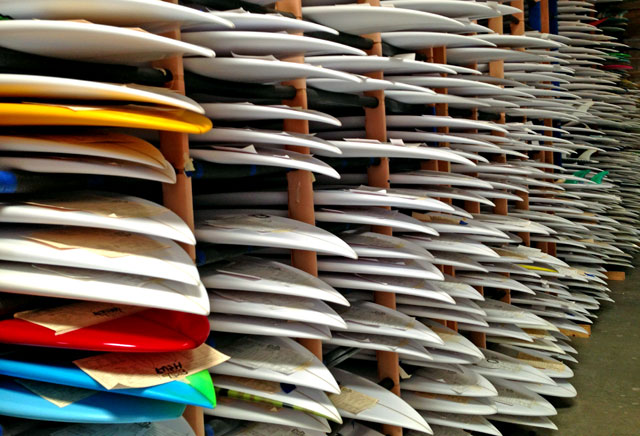
Polyurethane sleds are often sleek and beautiful, but epoxies are a more prudent intermediate surfboard choice
2. Materials: Plastic is fantastic, ditch the sexy of polyurethane foam and fiberglass
A polyurethane (PU) resin-tint mini-mal or mini-Simmons with wood-inlay fins is a beautiful craft. But it’s most likely not the right board for you for two reasons. First, It’s too heavy. Second, PU is not that durable. You will benefit from the reduced weight and strength of an epoxy or plastic-molded board. Epoxy constructions used by Firewire and hundreds of other builders are strong and lightweight. A pop-out is a plastic composite like the ones made by the folks at BIC.
The lighter weight will make it easier to stay higher up on the water and therefore paddle a bit easier. Think of polyester foam and fiberglass as more sharp knife like materials better suited to cutting through waves and water. The epoxy builds are more like a butter knife, able to cover a lot of surface area. That’s what you need right now, to cover a lot of surface area when paddling into a wave or getting speed to make sections.
The added durability will help preserve the board’s condition. Since you’re not used to transporting, storing or using a proper surfboard yet, you will most likely be pretty rough on it. Keeping the board in good condition will be of value when you go to sell it in one year (see #4)
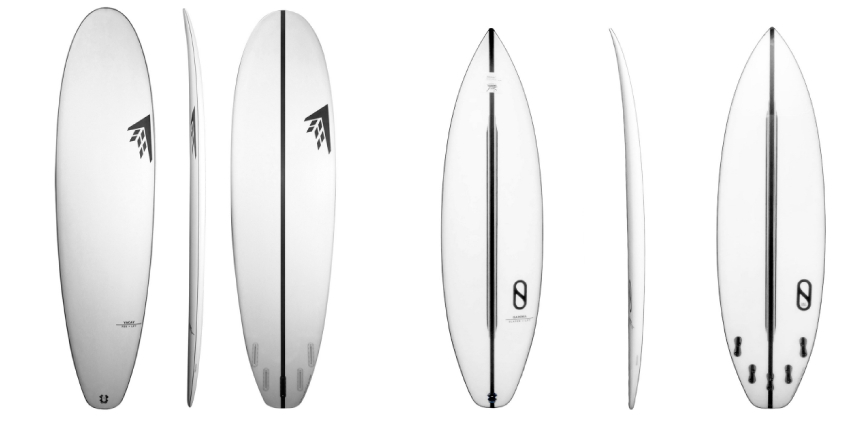
The template on the left is easier to surf. More outline means more stability. But a sized-up version of the board on the right will help you hone your turning chops quicker.
3. Templates: Tongue depressors are good, but (subtle) curves are best
A surfboard’s template (the outer profile or silhouette) tells you so much about how that board will perform in the water. As a general rule of thumb, the more straight or parallel lines in the board’s template, the faster it will go. But it will be harder to turn.
If you look at longboards, they are fast because they have a lot of board coming in contact with the water. All that water is channeled in a straight line down the board’s parallel rails as it moves across the wave. Likewise, a Mini-Simmons (which resembles a longboard cut in half) will also move quickly through the water.
On a curvier designs (shortboard template), when the rider initiates a turn, the board responds faster. Too much of a straight outline around your feet will lock up the board. Curves work because there is no extra surfboard getting in the way of the turn.
The challenge as you move into an intermediate board is to find a design that will allow you to turn, yet it will still provide enough stability. A board with enough curve in the template, like a shortboard, will work well. Just be sure it’s sized up enough to give you the paddle power and floatation you need as you improve your skills.
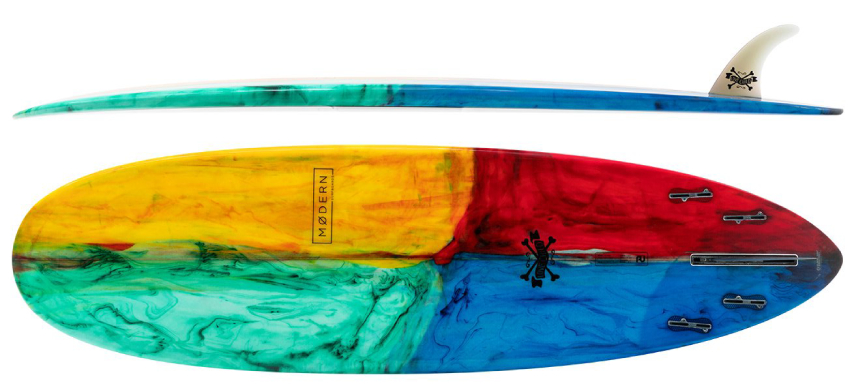
This photo illustrates how template and rocker flow together on a good design.
4. Sad but true: You will sell this board one year after buying it
The reality of your new purchase is that you will outgrow it. Fast. That missing link between an 8’ foamie and a trimmed-down shortboard, is crucial to your development as a surfer. The surfboard design that will work for you right here and now is way larger than what true intermediate surfers ride.
Far too many in-between surfers buy a shiny new sled that’s way too small for them, only to get frustrated. The lack of volume in a sexy new shortboard will prevent you from paddling well enough to get into the wave. The best thing you can do is size up when buying a shortboard design. Way up. You will progress more quickly. As you improve, all that extra foam will become cumbersome soon enough and get in the way of your surfing and you’ll want another board. Consider it the price of admission for rapidly advancing surfers like yourself.
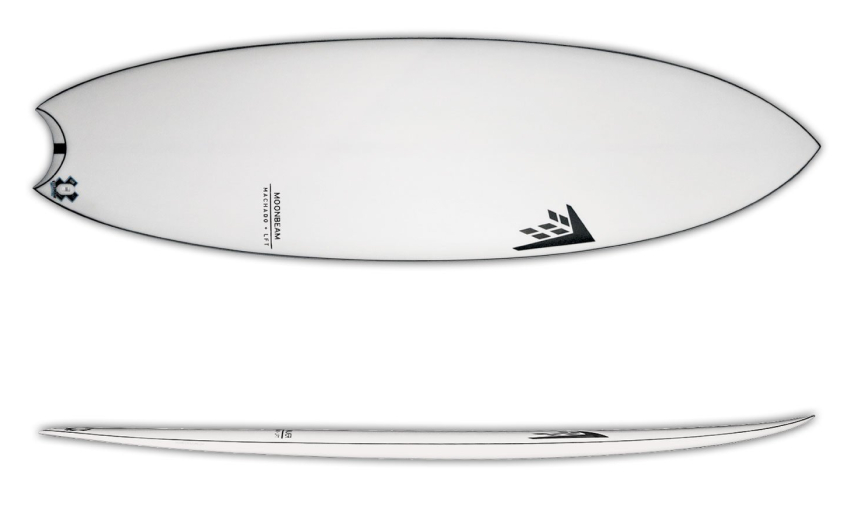
A good intermediate template is a fuller version of a standard shortboard.
5. Listen: The pros know, find expert advice at the pool or your local surf shop
The best thing you can do for your future as a wave pool or ocean surfer is to establish a relationship with a knowledgeable surfer. The beauty of wave pools is that facilities such as Surf Snowdonia have resident pros like Jo Dennison. These experts will see where you are on your surfing path and be able to offer advice. On top of that, these facilities have demo shops so you can try a board before you buy.
Also, hit up your local surf shop. A trusted shop employee will help steer you in the right direction on what board to get. Always aim for core shops and avoid the t-shirt-focused shops whose only surfboards are mounted on the wall. Surfboards are meant to be touched, picked up and dreamt about.
A shop that focuses on hard goods is a shop that knows what’s important in surfing. And while the profit margin on a logo tee is far and above that on deck grip, you’ll know that the shop is in business for the right reasons. They, like you love surfing, be it in a wave pool or the ocean.
5 intermediate surfboard options: Big guy tri-fin, minimal, fish, hybrid or retro single fin. All major board makers like Channel Islands, Lost Surfboards, Rusty, Firewire and GSI make these designs.
Trackback from your site.
Related Coverage

item289687291
| #
item289687291
In-between beginner and intermediate? Surfboard sizes and info
pokerqq
| #
pokerqq
In-between beginner and intermediate? Surfboard sizes and info
learn to surf newquay
| #
learn to surf newquay
In-between beginner and intermediate? Surfboard sizes and info
Best 9 what size surfboard for beginner - dianaadvisors.com
| #
[…] Quote from the source: … […]